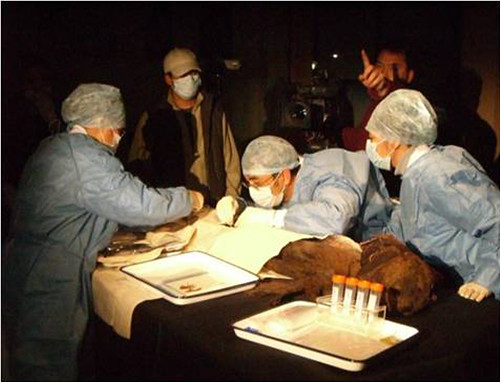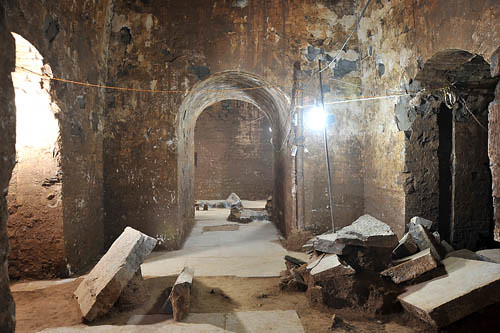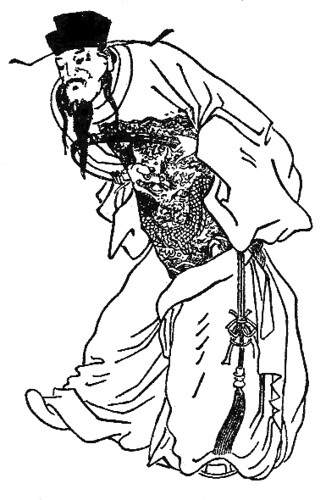The tomb of Chinese warlord Cao Cao one of Chinas latest and most controversial discoveries has yet to open itself up for firsthand public views. But an exhibit in Beijing offers the next best thing. From weapons and coins to statutes and artwork, 1,800 year-old relics from Cao Caos era will be on display at Beijings National Centre for the Performing Arts. The unique exhibit centers on Chinas Three Kingdoms period, and will go on until March 15. Lasting from 184 to 280 AD, the Three Kingdoms period is one of Chinas most famous eras. During this time, the country…
-
-
Calling all Chinese males with the last name Cao. Apparently, you might be the key to resolving Chinas latest archaeological controversy. Researchers at Shanghais Fudan University are collecting DNA samples from such people with the hope that they can help prove whether or not a recently discovered tomb belongs to a Chinese warlord. Made public in December, the tomb is believed to belong to Cao Cao, a legendary figure who lived during Chinas famed Three Kingdoms period (184 to 280). A corpse found at the site is the alleged remains of the ancient ruler. While archaeologists claim the find is…
-
Blue aliens with cat-like faces might first come to mind when one hears the word avatar, now that James Camerons latest sci-fi flick has become the top grossing movie of all time. But the box-office hit film is just the latest medium to popularize the word avatar, an ancient religious term thats taken on a new meaning in modern times. Aside from the movie, many people are likely familiar with the word avatar as an expression of the self (or the alter ego) in a virtual world. Participation in video games, internet forums and Heritage Keys own King Tut Virtual…
-
The recent discovery of Cao Caos tomb has sparked heated debates in the Chinese media over whether the find is genuine or not. The tomb, discovered in Chinas Henan province, is believed to belong to Cao Cao, a legendary Chinese warlord who lived about 1,800 years ago. At the end of last year, Chinese archaeologists announced the find to the public. The strongest evidence they point to includes inscriptions on artifacts found at the site, as well as a recovered corpse whose time of death closely matches with when Cao Cao is recorded to have died. Liu Qingzhu, a Chinese…
-
Archaeologists believe they may have found the remains of Cao Cao, a Chinese warlord renowned for his role during Chinas Three Kingdoms period. This past weekend Chinese archaeologists announced the find, saying they had discovered the ancient rulers tomb in Chinas Henan Province, near Anyang. Cao Cao, who lived from 155 to 220 AD, is a major historical figure in China. Both a military general and a poet, he established himself as a king of his own state while fighting to unite the country under his rule. Cao Caos life was later romanticized in Chinese literature, with him being cast…
-
Stock holders might soon be able to invest in Shaolin monks if reports of a new business venture in China are true. According to media outlets, the country’s famed Shaolin Temple, renowned for its kungfu, will be listed on China’s or Hong Kong’s stock market in 2011. The government entity that manages the 1,500 year-old temple was reported to have agreed on a joint venture with China Travel Service, a state-run tourism agency. The joint venture is meant to promote tourism of the temple and the surrounding area. By listing the shares on the stock market, the venture could raise…
-
He Shuzhong knows how bad the situation is: everyday something of cultural value is destroyed in China, he says. All he need do is pick up his cell phone, which also happens to act as a cultural protection hotline. “Do you know how many people have my cell phone number? I estimate it’s in the tens of thousands,” he said. “So everyday there’s someone who calls and tells us their situation.” He is the founder and chairman of the Beijing Cultural Heritage Protection Center. For over the last decade, he and volunteers have worked to preserve places of historical value…
-
In what looks like a massive relic hunt, China plans on sending experts across the world to find and catalogue artifacts that were looted from a historic summer palace in the second Opium War. Announced earlier this week, the project will involve a team of experts traveling to museums, libraries, and private collections in such countries as the United States, Britain, France, Japan – including the British Museum. The aim is to find out which artifacts were taken from Beijing’s Old Summer Palace when British and French troops sacked it in 1860, during the Second Opium war. According to rough…
-
Three ancient settlements, dating back at least 2,000 years ago, have been found on Jaffna Peninsula, an area on the northern tip of Sri Lanka. The settlements were discovered three weeks ago said Dr. Senarath Disanayake, the director general for the countrys archaeology department. Together, the sites cover a piece of barren land about 5 square kilometers. So far, only the black and red ware pottery found on the surface of the site has been studied. Disanayake said the artifacts date back to the Iron Age, putting the settlements roughly around 900 BC and up to the 1st century AD.…
-
Although each of the Terracotta warriors was sculpted to be unique, one common physical trait they all share is a beard. But a new discovery has found that a handful of statues bear no facial hair, suggesting that the Terracotta army had teenaged soldiers enlisted in its ranks. The Terracotta Army was built at the behest of China’s first emperor more than 2,000 years ago, when beards were a must for all adult males. To have one was a matter of respect, and one way of dealing with criminals at the time was cutting off their beards as a form…





